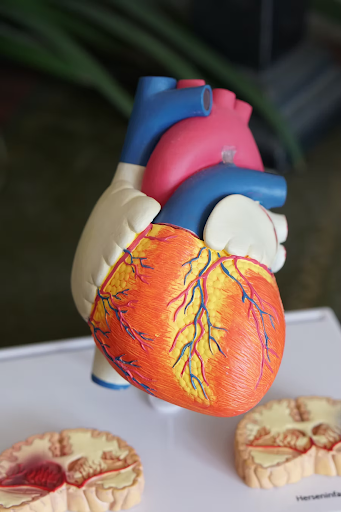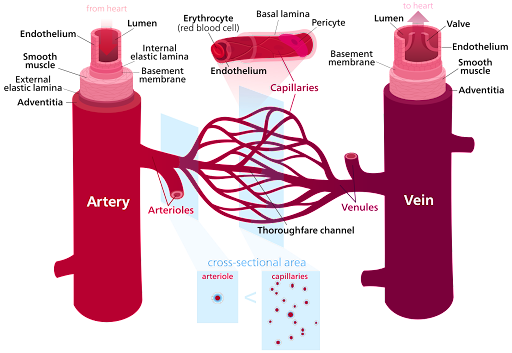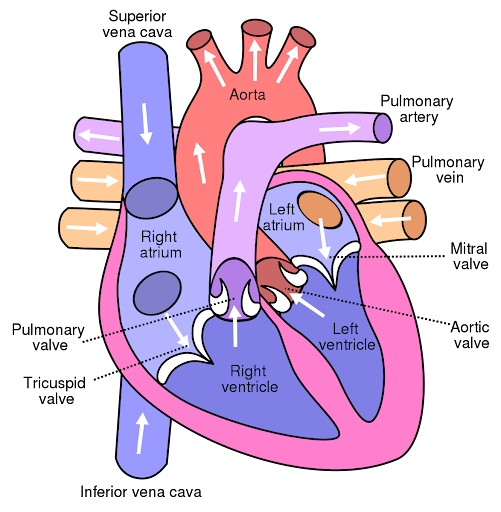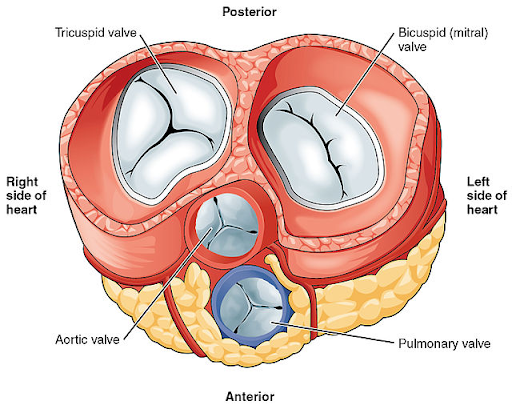The Circulatory System
6 min read•november 29, 2021
Riya Patel
Biology 🧍
13 resourcesSee Units
Functions and Parts of The Circulatory System
The Heart 💗.

Image Courtesy of Unsplash
💡 Fun fact: Did you know that the heart is only the size of your fist? ✊
As small as it may seem, the heart is one of the most essential organs in our body. While it powers the circulatory system, it also fuels our daily life processes through its internal functions. There are many different components of the heart’s anatomy, each with a particular function contributing to the flow of blood around the body or the exchange of gases (oxygen and carbon dioxide) to facilitate breathing. ⛽🔄
Functions 🔨
The heart is made up of a double-pumped, four-chambered system. The double-pumped system is there to pump oxygenated and deoxygenated blood all around the body. 👁
1️⃣ First Pump
The first pump helps deliver oxygen-deprived blood to the lungs, to drop off carbon dioxide and pick up oxygen. This pump is on the right side of the heart, where deoxygenated blood is transported to the lungs. This is called pulmonary circulation. 🩸😔
2️⃣ Second Pump.
The second pump pushes blood back up to the heart, where the blood is oxygen-rich. It will pump oxygen-rich blood throughout the body, where oxygen will be used up and sent to the first pump. This pump is on the left side of the heart, moving oxygenated blood around the body. This is called systemic circulation. ☝️😮💨
Vessels 🌷
You might be wondering, how does blood get transported throughout the human body? 🤔
Well, this is through the help of structures called vessels. There are three major types of vessels which transport different types of blood: arteries, capillaries, and veins. 🚚

Image courtesy of Wikimedia Commons
🅰 Arteries
Arteries are vessels that carry oxygenated blood away from the heart (towards the rest of the body). They are part of the process of systemic circulation. One exception to this, however, are the pulmonary arteries, which bring deoxygenated blood from the right ventricle to the lungs. 🚶♂️
💡 Note: A way to remember this is, Arteries = AWAY!
🅱 Capillaries
Capillaries are small vessels found in areas that need a lot of oxygen like the liver and kidney. This is where the internal respiration of oxygen happens, as carbon dioxide is deposited for removal at the lungs. This means that capillaries carry oxygenated and deoxygenated blood at the same time. Because of this, they are part of the exchange between systemic and pulmonary circulation. 📦
© Veins
Veins are responsible for moving deoxygenated blood away from the rest of the body towards the heart, and it is mainly a part of pulmonary circulation. However, one exception to this is the pulmonary vein, which carries oxygenated blood from the lungs back to the heart (left atrium). ☝
🚨 Remember: PULMONARY arteries and veins are EXCEPTIONS to the blood flow maintained by most arteries and veins! 🙈
Anatomy of the Heart 📊
Although the heart is a complex structure made up of different components, it can be split into three parts for simple understanding. 💖

Image courtesy of Wikimedia Commons
🚪 Chambers
The heart is made up of chambers, small (closed) compartments that store blood. 🔐,
💡 Note: Think about Harry Potter and the CHAMBER of Secrets. The chamber was an enclosed space!
There are four chambers in the heart. 💯
- Two chambers are atria, while the other two are ventricles.
- There is one of each chamber type per pump system.
- This means that there is an atrium and ventricle for pulmonary circulation and an atrium and ventricle for systemic circulation.
Atria
Atria are smaller than ventricles. Their main function is to collect blood that enters the heart from the rest of the body. The atria is the place within the heart where the blood will travel. 👐
Ventricles
Ventricles are bigger than atria and are found near the bottom of the heart. They collect blood from the atria and cause the heart to contract and relax, causing the blood to be pumped to other parts of the body. 💪
⏩ Heart Valves
Valves make sure that the blood is moving in one (1️⃣) direction. They make sure that blood flow does not occur backwards and continuous blood flow is maintained throughout the body. There are two types of valves: atrioventricular valves and semilunar valves. 😄

Image courtesy of Wikimedia Commons
Atrioventricular Valves
These valves are found between the atria and the ventricles. There are two kinds of atrioventricular valves in the heart. 🙅♀️
- The bicuspid valve (left) is used in systemic circulation to prevent oxygenated blood from flowing back into the left atrium.
- The tricuspid valve (right) is used in pulmonary circulation, helping prevent deoxygenated blood from flowing back into the right atrium.
Semilunar Valves
These valves have a crescent shape, hence their name. 🌙
There are two kinds of semilunar valves in the heart.
- The aortic valve (left) is used in systemic circulation to stop oxygenated blood from flowing back into the left ventricle. ⏮
- The pulmonary valve (right) is used in pulmonary circulation, to prevent deoxygenated blood from going back into the right ventricle. ⏭
🔎 Blood Vessels
Blood vessels connect to the heart to deliver blood. Some vessels are for the entrance and exit of oxygenated blood, while others are for the entrance and exit of deoxygenated blood. Without vessels, the heart wouldn’t be able to circulate blood! 👒
💡 Note: Think of vessels like a door, with things (in this case, blood) going in and out.
Vena Cava
The heart consists of two vena cavas: the superior vena cava and inferior vena cava. The main difference between these two is the place of connection.
- The superior vena cava connects the heart to the upper body
- The inferior vena cava connects the heart to the lower body.
💡 Note: Think of “superior” as above and “inferior” as below!
Although they have functional differences, both vena cavas end up moving deoxygenated blood back into the right atrium, meaning that they are related to pulmonary circulation.
Pulmonary Artery
The pulmonary artery moves deoxygenated blood to the lungs. It connects to the right ventricle and is part of pulmonary circulation. ⛓️
Pulmonary Vein
The pulmonary vein carries oxygenated blood from the lungs back into the left atrium. It is part of systemic circulation. 🔗
Aorta
The aorta can transport blood to different parts of the body.
- The ascending aorta helps deliver blood to the upper-half of the body. ☝️
- The descending aorta helps deliver blood to the lower-half of the body. 👇
The origin of the aorta is at the left ventricle, and it is part of systemic circulation.
Closing Remarks 🎈
And that’s it for the circulatory system! Although this topic was very vocabulary heavy, it shows that although the heart is small, it performs a variety of day-to-day functions. 👍
Additional resources:
- For those of you who'd love to learn more about the different body systems, check out this fantastic slide deck! 💻
- For you auditory learners, check out this video! 👂
🤝Connect with other students studying Biology with Hours
Browse Study Guides By Unit
🔬Cells
⚙️Biological Processes
🧍Human Body Structures
👨👩👦Genetics
🐒Evolution

Fiveable
Resources
© 2023 Fiveable Inc. All rights reserved.